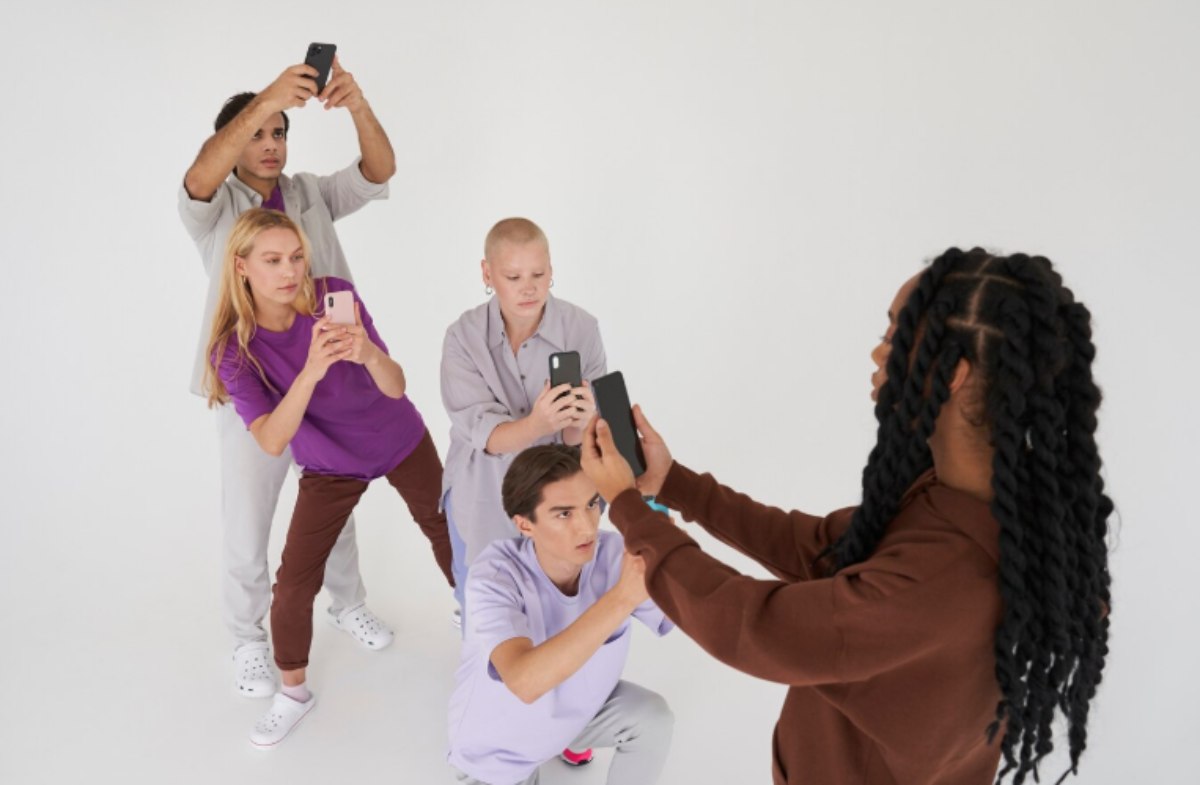Are We Rotating Our Phones Less? The Rise of Portrait-Mode Experiences

The everyday gadgets we hold in our hands have plenty of screens, but the trend says something different: the displays get bigger and bigger every year. I mean, if you’re an iPhone fanboy, you must already know this. The problem is that our screens are big enough when we hold them in landscape mode, but who even bothers to rotate the smartphone for any digital activity? Very few people, and there are indicators for why portrait mode has become the default.
Influence of Online Mobile Games
One major driver of the portrait revolution is mobile gaming. Modern mobile games – especially casual titles – increasingly favour vertical play. Developers have found that one-handed gameplay is a huge draw for players. By designing games that can be played with a single thumb, players can comfortably grip their phones and enjoy a game while on the move. Unlike traditional landscape titles that demand two hands and full attention, portrait-mode games can be played anywhere. This convenience means higher engagement and longer play sessions since there’s less effort or setup needed to start gaming.
Some key reasons vertical gaming appeals to users include:
- One-handed control: Players can operate the game with one thumb while holding the phone, keeping the other hand free. This makes it easy to play on the go or multitask.
- Play anywhere: Portrait games don’t require the user to find a comfortable two-handed position. Gamers can access the game wherever they are and whatever they are doing – whether commuting or waiting in line.
- Casual comfort: Minimal effort is required to start playing. By reducing barriers (no need to rotate the device or use both hands), vertical games feel more accessible and user-friendly.
It’s no surprise, then, that many of the top mobile games are now portrait-first. At one point in 2022, 73 of the top 100 free iPhone games were designed for portrait play. Genres like puzzles, casual arcades, and social casino games (e.g. slot machine apps) have led this charge by prioritizing vertical layouts. In particular, mobile slots have found a natural home in portrait mode – much of their gameplay involves vertical reels that fit nicely on a phone screen.
This is important, given the popularity of slots and online casino games in general. Why? Because casino gaming is very flexible when it comes to innovative user experiences, and sometimes even influential for other formats of games. So, here, it’s no exception.
Another major driver of the portrait-mode trend is the growing wave of vertical filmmaking. Viewers enjoy watching short stories vertically because it matches how they naturally hold their phones—no rotation, no setup, just a quick tap and they’re in. The vertical frame also adds a more personal, close-up feel that suits emotional, fast-paced moments. This shift in viewing habits has sparked the rise of apps built specifically for short, mobile-first storytelling, including every kind of vertical short form movie app designed for quick, one-handed viewing. These platforms blend cinematic moments with the convenience of scrolling, making vertical short films a natural part of everyday screen time.
Vertical Video Takes Center Stage On Social Platforms
- Platforms like TikTok, Instagram Reels, and YouTube Shorts have soared in popularity by offering endless vertical video feeds, fundamentally changing how we consume media.
- Engagement on vertical videos is significantly higher: TikTok’s vertical videos have a 25% higher 6-second watch-through rate compared to horizontal videos, and Snapchat reports vertical ads are 9× more likely to be watched fully than horizontal ones.
- These apps have trained users to expect quick, swipe-friendly vertical streams, resulting in longer attention spans within social media norms.
- The Australian market highlights this shift, with users spending over 42 hours and 13 minutes per month on TikTok—nearly double the time spent on YouTube’s primarily horizontal videos.
- While landscape videos still exist for longer viewing (like YouTube or Netflix), portrait-oriented short videos dominate daily content consumption for quick, on-the-go viewing.
Design, Hardware, And Marketing Trends Reinforce Portrait Mode
- Modern app design is built around portrait mode because studies show users hold their phones upright nearly 99% of the time, making vertical layouts the default. Many top apps like Facebook, Instagram, TikTok, Reddit, and Spotify don’t even support landscape orientation anymore.
- User convenience plays a big role in this trend. Features like one-handed mode and screen rotation lock encourage keeping the phone in portrait, allowing easier reach and preventing accidental rotation.
- Content creators and marketers have shifted to vertical formats such as Instagram Stories, Reels, and Snapchat vertical ads, as users tend to skip or avoid videos that require rotating the device. This shift is supported by specialized editing tools for social media content designed to optimize vertical videos and images.
- Meanwhile, landscape mode is mostly reserved for niche activities like watching full-length movies or playing complex, graphics-heavy games where a wider view is essential.
- Overall, for quick daily interactions, portrait mode has become the standard, reflecting both user habits and design strategies focused on vertical engagement.
Conclusion
The rise of portrait mode reflects a clear shift in how people use their smartphones, driven by convenience, design, and content trends. Mobile gaming’s move toward one-handed, vertical play, combined with the massive popularity of short-form vertical videos on platforms like TikTok and Instagram, has reshaped media consumption habits. App developers and marketers have adopted this by optimizing experiences for portrait orientation, making it the default for everyday interactions. While mode remains important for specific uses like movies and complex games, portrait mode now dominates as the preferred and practical format for most users.
